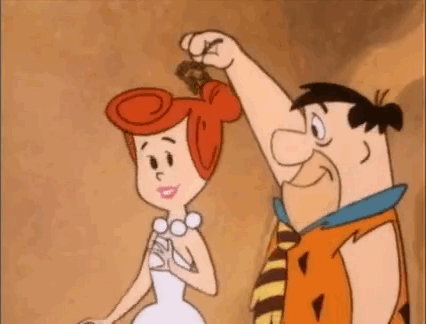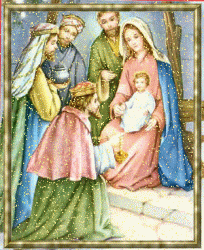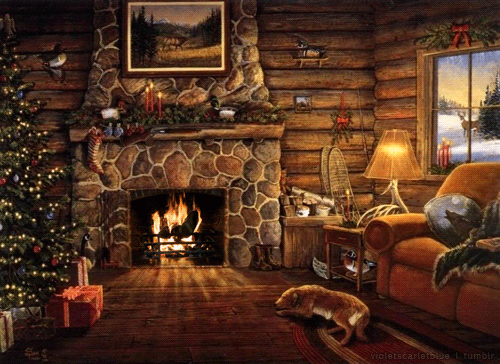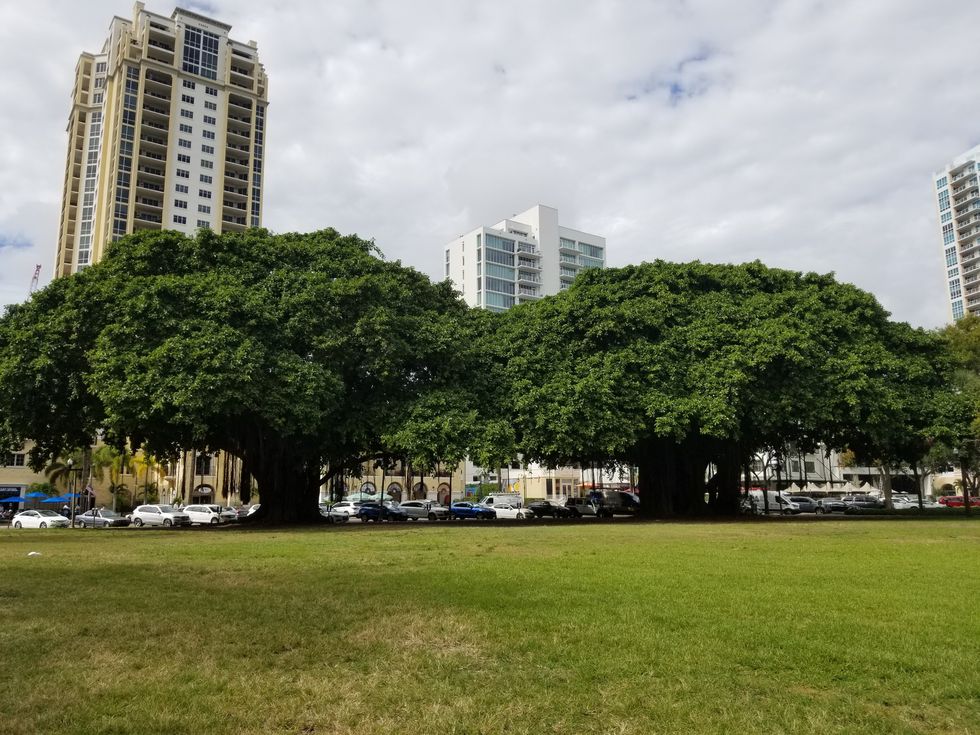10 Christmas Traditions That Will Never Go Out of Style
Traditions are one of the best parts.
Christmas is one of my favorite holidays. There is so much to love; the joy and cheer that comes with the holiday, celebrating the birth of Jesus, spending time with family and friends, the food, and the presents. All of this is good, but one of my favorite things about the holiday, is the traditions that come with Christmas. Here are ten Christmas traditions that will never go out of style.
1. Baking and Decorating Cookies

https://giphy.com/gifs/HallmarkChannel-christmas-in-evergreen-red-truck-letters-to-santa-1fiI1U7CeagnLJP4Jv
We do this one every year. It's one of my favorites. We get the fun of baking and decorating them, and the joy of eating them afterwards.
2. Sending Christmas Cards

https://giphy.com/gifs/filmeditor-will-ferrell-elf-xUySTyqlldKmpJMPqU
I love sending and giving Christmas cards. Everyone puts their own style on their cards. The custom of sending Christmas cards was started in the UK in 1843 by Sir Henry Cole. He was a worker at the Public Record Office now called the Post Office which was new at the time. With his friend John Horsley, an artist, they designed the first card. They decided to sell each card for one shilling each which would be 8 cents today. (Why Christmas; 2018)
3. Singing Christmas Carols

https://giphy.com/gifs/hulu-fox-the-mindy-project-26uf7ZR4WMf6ZoG5i
For me, I only listen to three certain Christmas Albums each year. I like Christmas songs, and I love singing along to each one. I will jam out in the car, in my room, in the shower; anywhere really. I don't care.
The history of Christmas Carols is that carols were first sun in Europe about a thousand years ago, but at this time, they were pagan songs instead of Christmas Carols. Carols were written and sun throughout the whole year for each season, but the tradition of Christmas Carols are still around today. Christians, during the early years, took over the pagan celebrations for Christmas.
After they did so, they gave people to sing Christians songs instead of pagan songs. However, not many people actually liked the Christmas carols that were written, and by the middle ages, people lost interest in celebrating Christmas. But changed in 1223 when St. Francis of Assisi started his Nativity plays in Italy. The people sang songs that told the story. Slowly over time, new carol services were created. These carol services along with performing them in the streets became popular. (Why Christmas; 2018)
4. Getting a Christmas Tree and Decorating It

https://giphy.com/gifs/filmeditor-will-ferrell-elf-xUySTUriHMB9TOipBS
This tradition has been around for thousands of years. Pagans would use branches to decorate their home during the winter solstice while the Romans used Fir Trees to decorate their temples for Saturnalia, an ancient Roman festival of Saturn that is held in December. In Northern Europe, they used cherry or hawthorn plants, and put them into pots to watch them grow hopefully into a flower at Christmas time. The first document use of a tree is argued between the cities of Tallinn in Estonia in 1441 and Riga in Latvia in 1510. However, both trees were put up by the 'Brotherhood of Blackheads' which was a group of merchants, ship owners, and foreigners in Livonia who were unmarried. (Why Christmas; 2018)
I love decorating the tree. Every year, the weekend after Thanksgiving is when our tree goes up. Every year, each member of the family gets a new ornament with our names and that year on it. Our tree is filled with decorations. I also love seeing what decorations people put up. Everything is so pretty. Some people get pretty creative, and I love it.
5. The Twelve Days of Christmas

https://giphy.com/gifs/lorde-adam-ellis-12-days-of-christmas-5jRFgLRSvTdHG
The 12 Days of Christmas starts on Christmas, and last until January 5th. These celebrations have been celebrated since at least the middle ages in Europe. Each day is either for a saint, and have different celebrations. I know the song better than the traditions (sorry) which came out in 2008.
6. Mistletoe

https://giphy.com/gifs/warnerarchive-hanna-barbera-flintstones-a-flintstone-christmas-d2Z88USw1NYO6sXm
The tradition of hanging it around in buildings, goes back to the ancient Druids. A Druid is a priest, magician, or soothsayer from the ancient Celtic religion. The mistletoe is supposed to have mystical powers that brings good luck, and wards off evil spirits. In Norse mythology, mistletoe is a sign of love and friendship. The tradition of kissing under the mistletoe comes from Norse mythology. (Why Christmas; 2018)
7. The Nativity Play

The Nativity Story is one of my stories from the Bible. The play is performed mainly in schools and churches. The play tells of the birth of Jesus along with the visit from Shepherd and the Wise Men after He was born.
Fun fact. The first play wasn't performed by children in the United Kingdom, but in Italy by Monks in a cave. (Why Christmas; 2018)
8. The Story of St. Nicholas

https://giphy.com/gifs/peter-chung-8tSGKRAtar4Gs
Christmas Classics are my favorite to watch, not only around Christmas time, but all year round. In one of them, it explains the story of Santa Claus. It's one of my favorite classics as well. It's a pretty good classic, in my opinion.
The story behind Santa Claus started back in the fourth century in Myra in Asia Minor (present day Turkey). There was a man named St. Nicholas who was rich after his parents left him a lot of money after they had passed away. He had a reputation for helping the poor and giving secret gifts to the people who needed it. Nicholas became a saint due to his kindness. In the 16th century northern Europe, St. Nicholas' stories weren't popular. In the United Kingdom, mainly England, he became 'Father Christmas' who was an character from plays during the middle ages. In France, he was called 'Pere Noel'. In the beginning of the United States, he was called Kris Kringle, but his name was changed after Dutch settlers came to the states and told stories about St. Nicholas. St. Nicholas became 'Sinterklaas', and later, his name became 'Santa Claus'. (Why Christmas; 2018).
9. Poinsettias

https://giphy.com/gifs/large-T0rP0uPuHrxDO
These beautiful plants are from Central America. The ancient Aztecs called them 'cuetlaxochitl'. In 1825, Joel Roberts Poinsett (where we get the plant's name from), became the first Ambassador from the United States to Mexico. In 1828, he visited 'Taxco del Alarcon' where people plant the flower during the winter. Poinsett became interested in the plant. He sent some back to South Carolina, and started growing them. Poinsett would send them to his friends as well. (Why Christmas; 2018).
I like poinsettias, and I think they are very pretty. I'm thinking I'm going buy some for decorations.
10. The Yule Log

https://giphy.com/gifs/dog-christmas-winter-o31Ubg03SKHMA
This tradition goes back to before the medieval times from a Nordic tradition. The name 'Yule' comes from the Winter Solstice festivals in Scandinavia and parts of northern Europe. Originally an entire tree, the Yule Log was chosen and brought into the house for a ceremony. The largest end would be placed into the fire while the rest of the tree would stay in the room. In Provence, France, it's a tradition that the entire family helps cut down the log, and they burn a little bit every night. In Cornwall, United Kingdom, the log is called 'the mock'. It is dried out, and the bark is taken off when it is and is later burned in the house. In Devon and Somerset, also in the United Kingdom, there are some that instead of a log they use Ash twigs. Certain parts in Ireland, people use a large candle instead of a log. (Why Christmas; 2018)
Everything about Christmas is fun, and I can't wait to start celebrating



 Trunk of the Banyan Tree with carvingsCorrinne Brubaker
Trunk of the Banyan Tree with carvingsCorrinne Brubaker Banyan Tree RootsCorrinne Brubaker
Banyan Tree RootsCorrinne Brubaker Banyan TreeCorrinne Brubaker
Banyan TreeCorrinne Brubaker




















